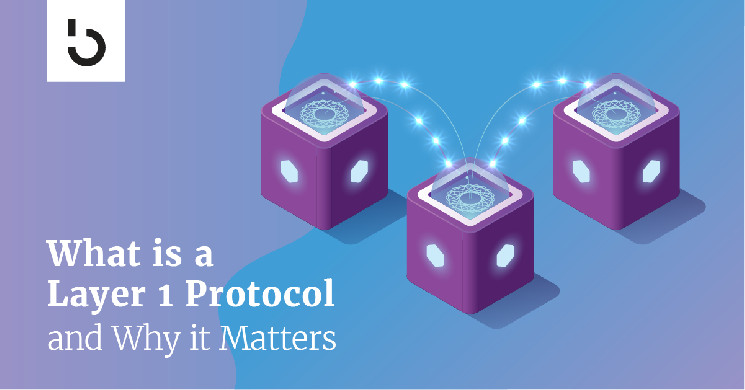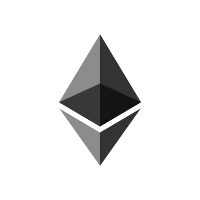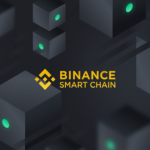What Is a Layer 1 Protocol and Why Does It Matter?

What are Layer 1 blockchains, and why is it important to distinguish them from Layer 2 solutions? In the following, we’ll discuss Layer 1 networks to help you differentiate them from other blockchain solutions. You could find this useful when analyzing various blockchain projects as investments.
What Is a Layer 1 Blockchain Protocol?
Layer 1 refers to the fundamental architecture of a blockchain. It has to ensure the decentralization, security, and scalability of transactions. However, it turns out that these three elements are not that easy to merge rigidly into a single structure, which is why older blockchains, including bitcoin, had to achieve security and decentralization at the expense of scalability. Newer versions of blockchain implement Layer 1 solutions with greater attention to scalability, although they may lose on the decentralization side.
All in all, the Layer 1 protocol represents the blockchain itself. In fact, we only defined “Layer 1” after introducing “Layer 2” protocols, which are secondary networks meant to improve the scalability or security of an underlying Layer 1 infrastructure. For example, the Lightning Network is a Layer 2 solution for bitcoin, which acts as Layer 1.
That being said, here are the most popular Layer 1 protocols that together account for more than 60% of the crypto market cap:
| Ticker | Market Cap | Total Value Locked (TVL) | Consensus Mechanism | BMJ Rating | |
|---|---|---|---|---|---|
| Bitcoin | BTC | $401.1 billion | $127.2 million | PoW | 4.93 |
| Ethereum | ETH | $144 billion | $47.7 billion | PoW switching to PoS | 4.33 |
| Binance Smart Chain | BNB | $38.4 billion | $6 billion | PoS | 4.17 |
| Avalanche | AVAX | $5.4 billion | $2.8 billion | PoS | 4.13 |
| Polkadot | DOT | $7.5 billion | — | NPoS | 4.10 |
| Cardano | ADA | $16.2 billion | $124 million | PoS | 4.03 |
| Algorand | ALGO | $2.2 billion | $101 million | PPoS | 3.80 |
| Solana | SOL | $12.6 billion | $2.6 billion | PoH | 3.72 |

Bitcoin
Ticker: BTC
Market Cap: $401.1 billion
TVL: $127.2 million
Consensus: Proof of Work
Bitcoin is the oldest and currently the largest cryptocurrency by market cap. Its underlying Layer 1 infrastructure represents a decentralized network of nodes that reach consensus thanks to the so-called Proof of Work (PoW) algorithm. It ensures a high degree of security, although it requires massive amounts of electricity for the mining process.
At the time of writing, bitcoin accounts for over 40% of the crypto market, down from 72% at the beginning of 2021. The decline in dominance suggests increasing interest in more scalable solutions, such as Ethereum, Solana, or Avalanche, all of which can host decentralized applications (dapps) and support the rapidly growing decentralized finance (DeFi) trend.
The bitcoin network is resilient and has never failed during all these years. The decentralized PoW-based infrastructure supports a cryptocurrency that is widely regarded as a safe haven against inflation, despite the fact that it has failed to provide that haven during the current inflationary period. (BMJ Rating: 4.93)

Ethereum
Ticker: ETH
Market Cap: $144 billion
TVL: $47.7 billion
Consensus: Transitioning from Proof of Work to Proof of Stake
The second-largest cryptocurrency by market cap is ETH, the utility token of the Ethereum ecosystem, which can host dapps and an unlimited number of tokens thanks to its smart contract feature.
Since its launch in 2015, Ethereum’s Layer 1 network has been backed by a PoW consensus mechanism similar to bitcoin. However, in order to achieve better scaling, the network is upgrading to adopt a Proof of Stake (PoS) algorithm. The switch to PoS has been gradual and will finalize at the beginning of 2023 when the current PoW chain becomes part of a wider PoS-based network made of so-called shard chains. The latter will enable Ethereum to become more scalable and give it greater capacity to store data.
PoS relies on a different validation process, which is called “forging.” The nodes planning to take part in the block creation process simply need to stake the native token. They don’t have to spend on electricity or buy specialized hardware as in the case of PoW blockchains. (BMJ Rating: 4.33)

Binance Smart Chain
Ticker: BNB
Market Cap: $38.4 billion
TVL: $6 billion
Consensus: Proof of Stake
Binance Smart Chain (BSC) is a PoS-based blockchain that supports smart contracts and can host DeFi applications. The public network was launched in 2020 by Binance, the largest cryptocurrency exchange in the world by trading volume. BSC came three years after Binance’s native Binance Chain (BC), the company’s primary decentralized blockchain that used to host the Binance Coin (BNB).
Early in 2022, Binance merged the two chains to form the BNB Chain, which includes the former BSC. As a result, the new network hosts the native BNB token as well as the applications that were previously built on BSC.
While the native token retains its ticker, it changed its name to “Build and Build.” BNB acts as a governance token and fuels transactions on the new chain. Binance decided to upgrade its decentralized network to embrace large-scale apps related to emergent sectors like Metaverse, GameFi, and SocialFi. The new chain borrows the compatibility with the Ethereum Virtual Machine (EVM) from BSC.
The BNB Chain has similar functionalities to Ethereum, but many argue that it’s not as decentralized as promoted. Specifically, it relies on a PoS consensus that uses only 21 validators selected from the network. (BMJ Rating: 4.17)

Avalanche
Ticker: AVAX
Market Cap: $5.4 billion
TVL: $2.8 billion
Consensus: Proof of Stake
Avalanche is a fast-growing blockchain that supports smart contracts and is designed for DeFi needs. Like Algorand, it claims to address the blockchain trilemma with a unique architecture. Specifically, it uses three different chains as follows:
- The Exchange Chain (X-Chain) is the default chain where users mine and exchange digital assets. The native token AVAX resides on this chain.
- The Contract Chain (C-Chain) allows developers to build smart contracts. It is based on the EVM, enabling smart contracts to benefit from cross-chain interoperability with Ethereum dapps.
- The Platform Chain (P-Chain) is used by Avalanche validators to coordinate their effort. Users can also use the P-Chain to create and manage subnets, which are independent blockchains hosted by Avalanche.
Users are able to move tokens across all three networks based on their needs. Avalanche’s multi-chain approach enables it to support more than 4,500 tps with almost instant finality. (BMJ Rating: 4.13)

Polkadot
Ticker: DOT
Market Cap: $7.5 billion
TVL: —
Consensus: Nominated Proof of Stake
Polkadot is a decentralized public network that puts a great emphasis on interoperability. Its multi-chain framework has attracted many developers, which helped its native cryptocurrency DOT enter the top 10 list in less than a year following its launch.
Polkadot is an ecosystem of chains that can communicate with each other while being independent. Known as parachains, these networks are hosted on the main chain, which is Polkadot. The other chains benefit from all the features of the mainnet, which relate to scalability and high transaction speed.
While Ethereum and Solana let developers build dapps, Polkadot allows them to build blockchains from scratch and have full control over their decentralized ecosystem. The parachains are highly customizable and can satisfy a wide range of use cases. (BMJ Rating: 4.10)

Cardano
Ticker: ADA
Market Cap: $16.2 billion
TVL: $124 million
Consensus: Ouroboros (PoS)
If Ethereum came to solve the problems of bitcoin, Cardano was launched as an alternative to Ethereum, although it still hasn’t managed to challenge it. Cardano was launched in September 2017 by former Ethereum co-founder Charles Hoskinson and former Ethereum executive assistant Jeremy Wood. The network is supervised by three different entities, including the Cardano Foundation, IOG (formerly known as IOHK), and Emurgo.
The main goal of Cardano is to take smart contracts to the next level by ensuring higher speeds and greater interoperability.
The Cardano network is divided into two distinct layers: the Cardano Settlement Layer (CSL), which is used for ADA transfers, and the Cardano Computation Layer (CCL), which supports the smart contract functionality that enables developers to build dapps. In this way, the ecosystem can prevent congestion and high transaction fees. Cardano relies on a unique PoS version called Ouroboros. (BMJ Rating: 4.03)
Algorand
Ticker: ALGO
Market Cap: $2.2 billion
TVL: $101 million
Consensus: Pure Proof of Stake
Algorand launched in 2019 and has managed to build a diverse ecosystem. It is one of the very few blockchains that claim to solve the so-called Blockchain Trilemma by achieving scalability without compromising the security and decentralization of the network. This is possible thanks to its Pure Proof of Stake (PPoS) algorithm – a PoS version invented by MIT Professor Silvio Micali.
The PPoS consensus mechanism enables every ALGO holder to potentially become a block validator. For every new block, the system picks a validator randomly and secretly, giving all users an equal chance to be selected. This approach enables the network to be fully decentralized.
Like Solana, Algorand puts a great emphasis on scalability and speed, being capable of processing over 1,200 tps with instant finality. The network is currently introducing a feature called block pipelining, which will boost tps performance to over 45,000. (BMJ Rating: 3.80)
Solana
Ticker: SOL
Market Cap: $12.6 billion
TVL: $2.6 billion
Consensus: Proof of History
Solana has managed to become one of the largest blockchain networks in a relatively short period, being launched in 2020. Its native cryptocurrency, SOL, is in the top 10 and has been almost since the launch of the token.
Solana relies on a PoS algorithm, but it merges it with a unique consensus mechanism known as Proof of History (PoH), an innovation that enables the chain to keep an accurate record of transactions and settle them based on timestamps rather than communication with other validating nodes. This approach enables Solana to achieve impressive speeds, which makes it super scalable.
The Layer 1 network can handle up to 50,000 tps with almost instant finality, although in practice, Solana manages on average less than 3,000 tps, which is way faster than Ethereum.
Like BSC, Solana has made sure to achieve interoperability with Ethereum. It introduced its cross-chain bridge known as Wormhole shortly after the launch in 2020. Unfortunately, earlier this year, the protocol lost about $320 million due to a hacking attack targeting a Wormhole loophole. (BMJ Rating: 3.72)
Why we need Layer 1 Protocols
Layer 1 blockchains represent the fundamental elements of all decentralized applications. The resilience of DeFi, NFTs, and everything “blockchain-based” depends on Layer 1 networks. For example, if we spot a major loophole in Ethereum, we should worry about the entire DeFi ecosystem, given that most of it is based on Ethereum. For this reason, Layer 1 networks must be truly decentralized and secure.
Newer blockchains support many operations and features directly on Layer 1. For example, blockchains that support smart contracts can host dapps that benefit from the security and decentralization of Layer 1, making those dapps much safer.
Layer 1 Scaling Problems
Given that Layer 1 blockchains, especially the older ones, have been focusing on ensuring a high degree of security and decentralization, they may lose on the scalability side. When demand on those blockchains increases quickly, the scaling problems become more visible. Some blockchains implement upgrades directly on their Layer 1 networks to address this issue. Here are two most relevant examples:
- SegWit (Bitcoin) – this refers to an update in bitcoin implemented in 2017. The main result of the upgrade was a change in the transaction format of bitcoin to reduce transaction time by increasing block capacity and protecting against transaction malleability.
- Sharding (Ethereum) – sharding is the final upgrade implemented by Ethereum in multiple phases. Expected to be fully launched in 2023 or 2024, it refers to splitting the entire Ethereum network into multiple portions called shards. They will operate in parallel and help the ecosystem become more rapid and flexible.
What’s the Difference between Layer 1 and Layer 2 Blockchain Protocols?
The main difference between Layer 1 and Layer 2 is that the former represents the actual blockchain network itself, while the latter is a secondary layer built on top of the main chain to address specific problems and limitations. It’s like adding tuning components to a car to improve its performance and achieve greater results.
A Layer 2 solution is always on top of an underlying blockchain. Layer 2 networks can process transactions more quickly and cheaply than Layer 1s, but they don’t benefit from the same level of security and decentralization.






 Bitcoin
Bitcoin  Ethereum
Ethereum  Tether
Tether  USDC
USDC  TRON
TRON  Dogecoin
Dogecoin  Cardano
Cardano  Bitcoin Cash
Bitcoin Cash  Chainlink
Chainlink  LEO Token
LEO Token  Monero
Monero  Zcash
Zcash  Stellar
Stellar  Litecoin
Litecoin  Hedera
Hedera  Dai
Dai  Cronos
Cronos  OKB
OKB  Tether Gold
Tether Gold  Ethereum Classic
Ethereum Classic  KuCoin
KuCoin  Gate
Gate  Algorand
Algorand  Cosmos Hub
Cosmos Hub  VeChain
VeChain  Stacks
Stacks  Tezos
Tezos  Dash
Dash  TrueUSD
TrueUSD  IOTA
IOTA  Basic Attention
Basic Attention  Theta Network
Theta Network  Decred
Decred  NEO
NEO  Synthetix
Synthetix  Qtum
Qtum  0x Protocol
0x Protocol  Ravencoin
Ravencoin  DigiByte
DigiByte  Zilliqa
Zilliqa  Holo
Holo  Nano
Nano  Siacoin
Siacoin  Numeraire
Numeraire  Waves
Waves  Status
Status  Enjin Coin
Enjin Coin  Ontology
Ontology  BUSD
BUSD  Hive
Hive  Pax Dollar
Pax Dollar  Lisk
Lisk  Steem
Steem  Huobi
Huobi  NEM
NEM  OMG Network
OMG Network  Bitcoin Gold
Bitcoin Gold  Augur
Augur